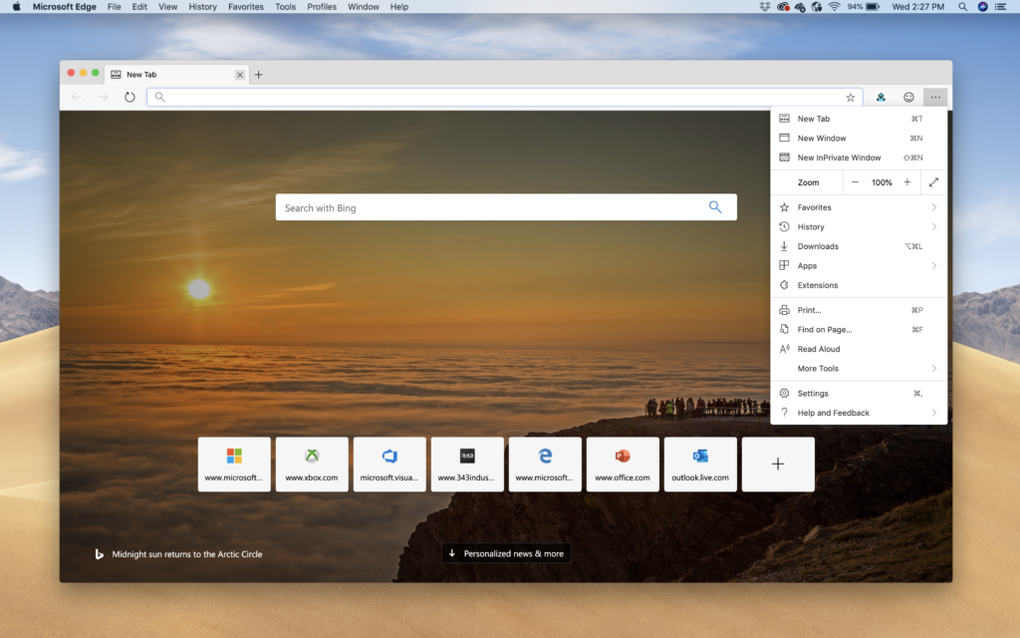

To avoid a confusing navigation experience, we recommend that child elements of a directional area not be explicitly specified in the tab navigation order of your application. Tab order is not affected by this property. You can use the XYFocusKeyboardNavigation property (which has possible values of Auto, Enabled, or Disabled) to manage 2D inner navigation with the keyboard arrow keys. When focus shifts to this object, the keyboard arrow keys (left, right, up, and down) can be used to navigate between child elements within the directional area.ĢD Inner navigation region, or directional area, of a control group The 2D inner navigation region of a control, or control group, is referred to as its "directional area".
#Microosoft edge mouseless browsing software#
The Engineering Software for Accessibility eBook has an excellent chapter on Designing the Logical Hierarchy. Does the layout require custom directional navigation (arrow keys) and tab order?.If yes, do those groups contain sub-groups?.Are there groups of controls with greater importance?.Some other focus navigation considerations include:
In most cases, we recommend custom focus navigation behavior follows the preferred reading pattern of the user's culture. When implementing focus navigation, consider how a user will interact with your application and what the logical navigation should be. It is important to remember that unlike navigating with a pointer device such as a mouse or touch, focus navigation is linear. Screen readers and similar accessibility tools still announce these static elements, even when they are not included in focus navigation. Only those UI elements that require user interaction should support focus navigation, elements that don’t require an action, such as static images, do not need keyboard focus. See Handle pointer input for guidance on building custom experiences in Windows applications for pointing devices.įor more general information on building apps and experiences for keyboard, see Keyboard Interaction.
#Microosoft edge mouseless browsing how to#
This topic describes how to optimize a Windows application and build custom interaction experiences for users that rely on non-pointing input types.Įven though we focus on keyboard input for custom controls in Windows apps on PCs, a well-designed keyboard experience is also important for software keyboards such as the touch keyboard and the On-Screen Keyboard (OSK), supporting accessibility tools such as Windows Narrator, and supporting the 10-foot experience. Input devices are typically classified as pointing devices, such as touch, touchpad, pen, and mouse, and non-pointing devices, such as keyboard, gamepad, and remote control.


 0 kommentar(er)
0 kommentar(er)
